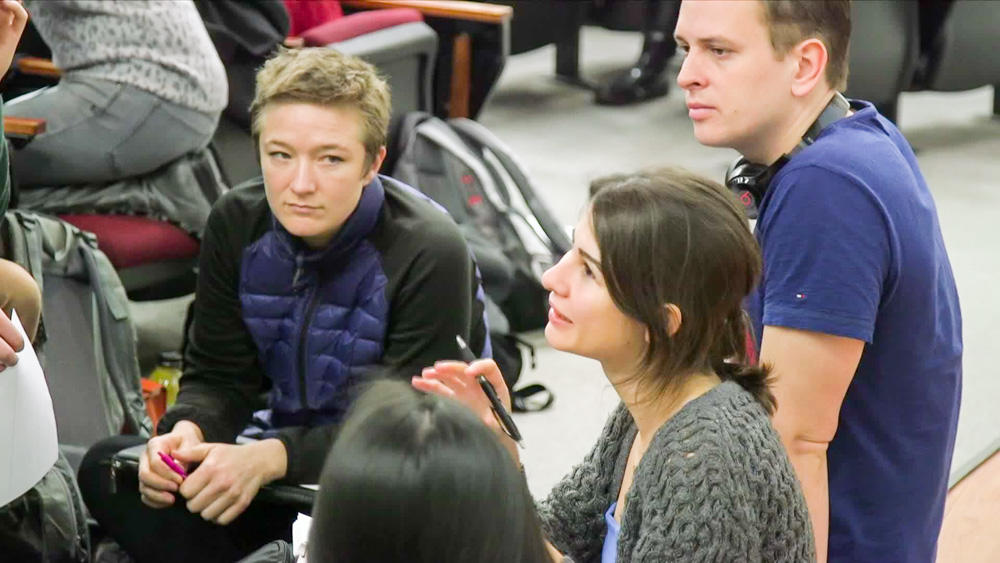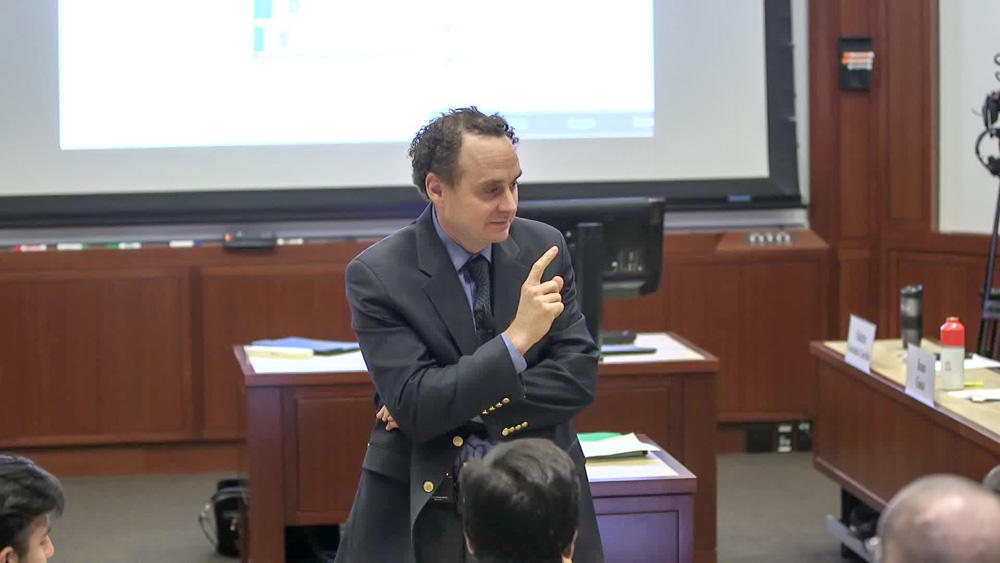A classic challenge for the lecturers is how to fit all relevant material into the timeframe of a short class period, not to mention a short semester. When a student makes an insightful point that would take the class in a new direction, instructors must decide: Do I go on a worthwhile tangent to address the student’s point, or do I proceed as I had planned? In this video, Brett Flehinger shares why he allows student contributions to shape the path a class takes and how he makes strategic adjustments on the fly.
Making adjustments on the fly to keep lectures “organic”
Instructor
Brett Flehinger, Lecturer on History
Student Group
Undergraduate
School
Harvard College
Course
American Populisms: From Thomas Jefferson to the Tea Party + Trump
Group Size
38 students
- Prior to class, create a lecture plan segmented into parts with time estimates so you are aware if one part of your lecture is running long or moving more quickly than expected
- Aim for middle ground between blazing ahead with an iron fist and ceding control to any tangent that surfaces. A lecture too tightly planned may feel stilted or inauthentic, while a lecture that follows any student interest may feel incoherent or frustrating for students.
- Predetermine points in your lecture where open discussion may be advantageous. Some topics, when discussed, will lead to deeper understanding, whereas others might not require such conversation.
Studies in expertise suggest instructors prioritize depth over breadth as this approach supports deeper learning (Morphew et al., 2015; Bransford et al., 2000)
A sense of autonomy and some control over course content are important components in student motivation (Deci & Ryan, 2000)
- In “Teaching by the Case Method: Timing”, Harvard Business School professors reflect on how they create flexible plans and adjust timing on the fly
- In another Instructional Moves video, Christina “V” Villarreal discusses how she uses guiding questions to make strategic choices about how to prioritize class time




